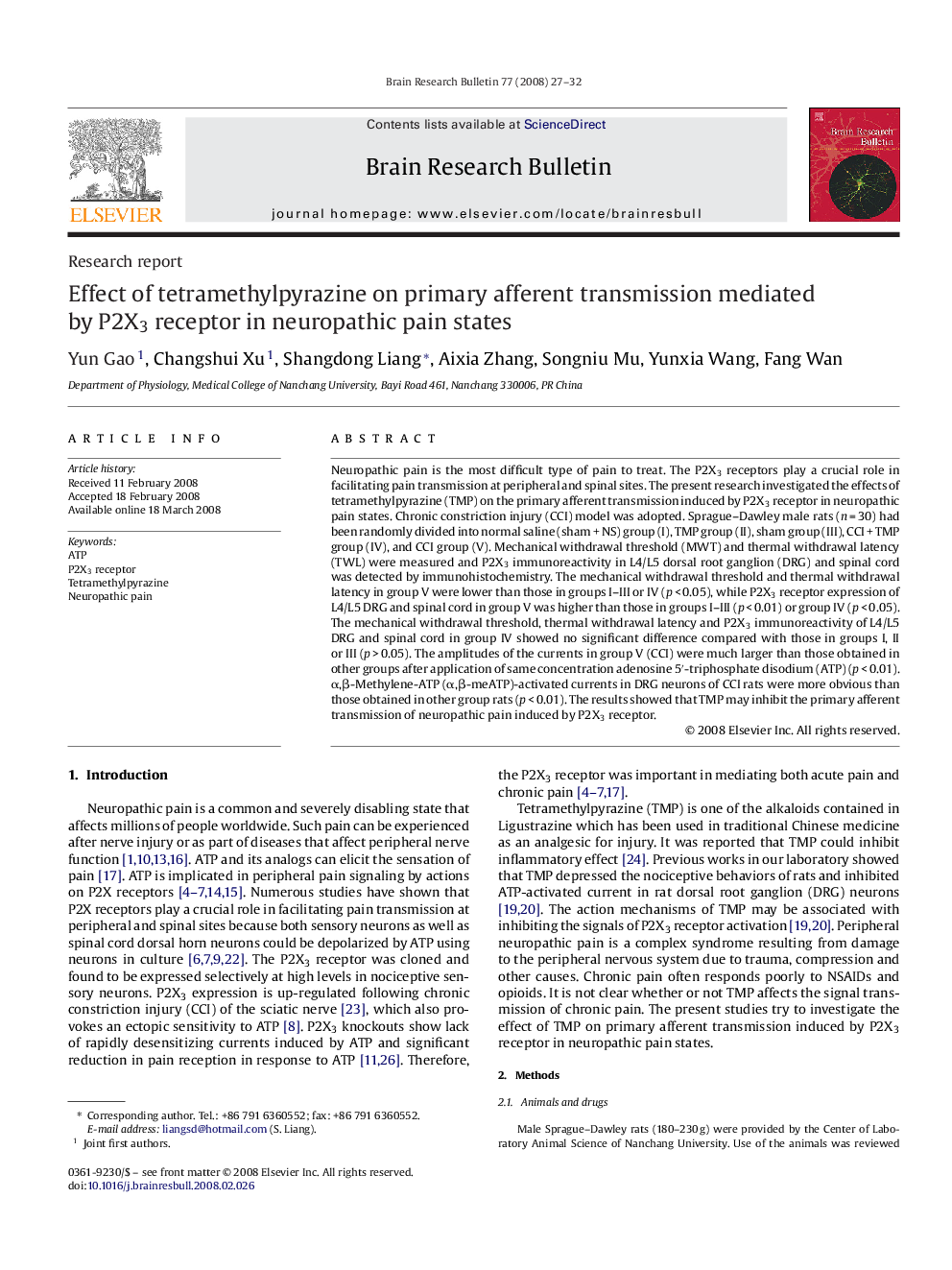| Article ID | Journal | Published Year | Pages | File Type |
|---|---|---|---|---|
| 4320092 | Brain Research Bulletin | 2008 | 6 Pages |
Neuropathic pain is the most difficult type of pain to treat. The P2X3 receptors play a crucial role in facilitating pain transmission at peripheral and spinal sites. The present research investigated the effects of tetramethylpyrazine (TMP) on the primary afferent transmission induced by P2X3 receptor in neuropathic pain states. Chronic constriction injury (CCI) model was adopted. Sprague–Dawley male rats (n = 30) had been randomly divided into normal saline (sham + NS) group (I), TMP group (II), sham group (III), CCI + TMP group (IV), and CCI group (V). Mechanical withdrawal threshold (MWT) and thermal withdrawal latency (TWL) were measured and P2X3 immunoreactivity in L4/L5 dorsal root ganglion (DRG) and spinal cord was detected by immunohistochemistry. The mechanical withdrawal threshold and thermal withdrawal latency in group V were lower than those in groups I–III or IV (p < 0.05), while P2X3 receptor expression of L4/L5 DRG and spinal cord in group V was higher than those in groups I–III (p < 0.01) or group IV (p < 0.05). The mechanical withdrawal threshold, thermal withdrawal latency and P2X3 immunoreactivity of L4/L5 DRG and spinal cord in group IV showed no significant difference compared with those in groups I, II or III (p > 0.05). The amplitudes of the currents in group V (CCI) were much larger than those obtained in other groups after application of same concentration adenosine 5′-triphosphate disodium (ATP) (p < 0.01). α,β-Methylene-ATP (α,β-meATP)-activated currents in DRG neurons of CCI rats were more obvious than those obtained in other group rats (p < 0.01). The results showed that TMP may inhibit the primary afferent transmission of neuropathic pain induced by P2X3 receptor.
